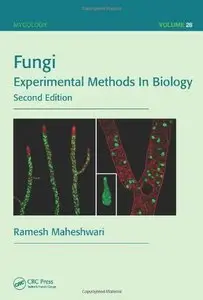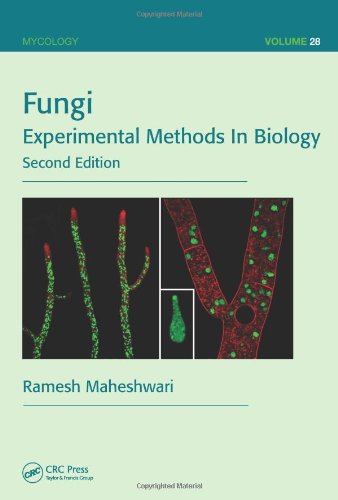Ramesh Maheshwari, "Fungi: Experimental Methods In Biology, Second Edition"
English | ISBN: 1439839034 | 2012 | 358 pages | PDF | 14 MB
English | ISBN: 1439839034 | 2012 | 358 pages | PDF | 14 MB
Fungi are now at the forefront of research on mechanisms in gene silencing, biological rhythm, mating processes, biogenesis of intracellular organelles, adaptations to hostile habitats, structure of natural populations, and speciation. Because of their small genomes, fungi are being used in "systems biology" to understand the connections between genes, proteins, and metabolic and signaling pathways. The ease with which yeasts and fungi can be cultivated in simple nutritive media has also made these eukaryotic organisms the choice material for basic and applied research.
Fungi: Experimental Methods in Biology, Second Edition presents the latest information on fungal biology generated through advances in genetics, molecular biology, and biochemistry. It gives an account of real experiments that have been carried out on the diverse lifestyles of these organisms. Following in the footsteps of its highly-praised predecessor, this book continues to be a comprehensive review of the state of our knowledge about how fungi function.
Examining both unicellular and multicellular fungi, this accessible book covers:
Special features of fungi
Interaction of fungi with other organisms
Use of fungi as sources of chemicals for human health and welfare
Model fungi in research
Gene manipulation
Adaptations
Natural populations
Throughout, the book draws attention to unsolved questions and to the opportunities offered by the diversity of fungi. Written by a prominent mycologist, it provides an excellent introduction and reference for beginning researchers as well as for experienced professionals.
What’s New in This Edition:
New chapters on spores’ dormancy, germination, and uses; fungi as scavengers; and fungi as chemical factories
All chapters substantially revised, updated, and rewritten, in particular The Hyphal Mode of Life, Fungi as Symbiotic Partners, and Fungi as Plant Pathogens
New material on the use of yeast for functional analysis of genomes; the use of Neurospora in cytogenetics and genes controlling conidiation; and the identification of the clock gene
A new glossary to reinforce important concepts



